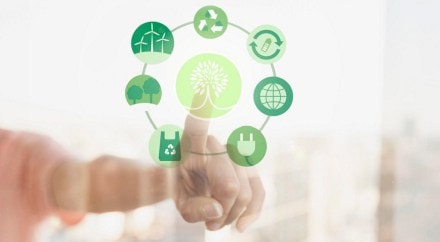– By Gaurav Daga
With the growing population across the globe, with India being No 1 in the world, the use of plastics is also growing exponentially. A typical trip to a vegetable vendor or a retail store ends with multiple plastic bags with a huge amount of plastic packaging material being used to fulfill the needs. Similarly, ordering online isn’t any better as many packaging materials come with plastics. With changing perceptions about environmental health, consumers and enterprises are shifting their focus to sustainable solutions.
Plastic packaging has a frightful public perception. Consumers have become environmentally conscious with social media hashtag activism about plastic pollution. As a result, alternative packaging materials like paper and glass are becoming more socially acceptable but that doesn’t imply they are really better.
Alternative packaging solutions are short-lived as paper is a major contributing factor. Attributing to increased paper consumption for alternative packaging solutions, more than 361 million hectares of trees were destroyed, equivalent to a 9 per cent reduction of the world’s forests, as the stats suggest. On the other hand, glass packaging production is a result of silica extraction that causes mineral damage, depletes natural reserves and negatively impacts the environment. Hence, the infrastructure to sort and recycle plastic packaging is coming to the forefront to address the emotional issues of the packaging industry.
After years of experimenting, stakeholders have found that plastic packaging can have a sustainable future. Though the push for plastic packaging does not sound empathetic to many new-age consumers, it has a possible solution – a circular economy. The idea envisions a closed loop that works for products like containers and others where used materials are recollected, sorted and remade into new items.
Practice of circular economy
The circular economy banks upon the fact that plastic never becomes pollution. The practice to create a circular economy requires a three-pronged approach – Eliminating problematic plastic materials, Innovating the materials that are reusable and recyclable and Circulating the items in the economy and disposing out of the environment.
Until before the government and industry stakeholders intervened in plastic packaging material usage, it was burdensome to practice reuse models. In recent years, significant changes have come and packaging companies and brand owners reinvent packaging by designing products to reduce the amount of non-recyclable materials in the first place. These companies are working towards sustainability commitments by making leaner and lighter plastic packaging materials with an approach to eliminate single-use plastic packaging & Multi-Layer Barrier for example ABL -Aluminum Barrier Laminate and replace them with regenerative solutions. Simply put, they are focused on innovating the recycling end of the supply chain.
Collaborative approach to circulation
Building a circular economy involves building a system with a wide range of players participating in it: packaging companies, government, non-profit groups and informed consumers. This plays an instrumental role in keeping recyclable plastic packaging material in circulation in the economy. Furthermore, it helps in reducing plastic waste and pollution with significant reductions in greenhouse gas (GHG) emissions.
Reusable plastic packaging is crucial in transportation costs by supplying refills in compact forms, mainly for reusable containers. It further optimizes operations for distribution and logistics through sharing reusable packaging across networks. However, these practices require partnerships within industries which encourages action and transparency.
Chemical recycling to close the loop
Recycling plastic packaging materials is based on the approach of material separation. Chemical recycling proves to be a significant step in stripping down the original building blocks of plastic material so they can be redesigned and reshaped into new products. This accelerates the shift from a ‘waste-oriented economy’ to ‘resource-oriented economy’ that creates secondary material for further reuse.
Chemical recycling fights the leakage of plastic flow into the environment, especially those littering water bodies. Overall, it has a huge impact on lowering carbon footprints and ending the routine practices of landfilling.
Though chemical recycling has become a robust solution to the burning issue, certain factors can lead to its restricted adoption in the economy. The process includes challenges associated with technology and making the technique profitable. The higher operating costs with limited incentives for innovation further require the stakeholders to aggregate plastic waste in abundant quantities. Hence, it could be a way to overcome mechanical recycling shortcomings. To implement it for a scalable circular economy, the policymakers and industry stakeholders have miles to go.
Key considerations
The circular economy offers a promising vision for limiting and eliminating plastic waste from the environment. Building a closed-loop system will require extensive effort in the efficacy of the value chain such as supporting projects and initiatives to optimize the economics of recycled polymers. Further, companies need to collaborate at global levels as non-recyclable plastic waste is a global issue and interventions are required at a large scale.
(Gaurav Daga is the Managing Director at AG Poly Packs.)
(Disclaimer: Views expressed are personal and do not reflect the official position or policy of Financial Express Online. Reproducing this content without permission is prohibited.)
